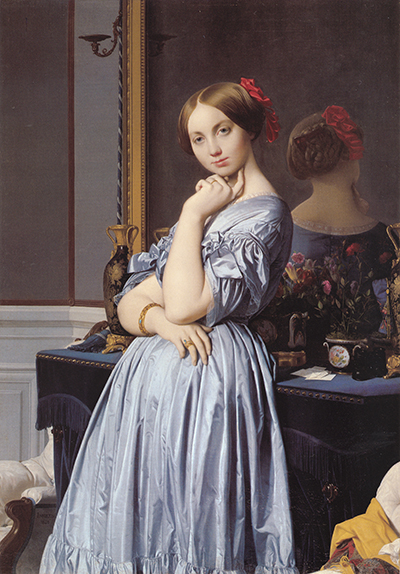French Neoclassical artist Jean-Auguste-Dominique Ingres produced this portrait painting of Comtesse d'Haussonville in 1845, in his standard technique of oil on canvas.
This detailed artwork can now be found at the The Frick Collection, New York and measures 131.8 x 91cm. It is amongst their most significant pieces, as well as being one of Ingres' finest female portraits. This artwork is one of the most researched and deeply understood paintings from his career thanks to a number of study pieces that have been uncovered in recent years. A white highlight with graphite drawing plus a low-detail oil study piece were uncovered, clearly being of the same model and in a fairly similar pose. They were both dated at three years previous to this artwork, again backing up the theory that they were directly in preparation for this piece.
Ingres jumped in and out of portrait painting, depending on what other options were available at the time. He loved most history painting, but these commissions would come and go over time, and he could not rely on this genre alone to finance his work. As such, portrait painting was an alternative which offered lower financial rewards but offered a steady stream of work. His career is full of portraits and despite his reluctance to do them, he still produced fine work which was kind to his models and also accurately communicated their respective beauty and personalities. On some occassions he even took on some projects after initially being resistent before meeting the subjects in person and changing his mind on the spot.
The artist used large mirrors sometimes in his portraits as this enabled him to capture a face from different angles in the same painting. We can see the same here. He appends considerable detail across the canvas, besides just the stunning female modelling plus her elaborate clothing. There are several bunches of flowers plus some vases placed on the row that sits just below the mirror. These touches may not seem important as first, but they help to set the scene and allow the mind to understand the rest of the room in which this composition was put together. These are all the hallmarks of most of Ingres' portrait paintings, right across his career.




